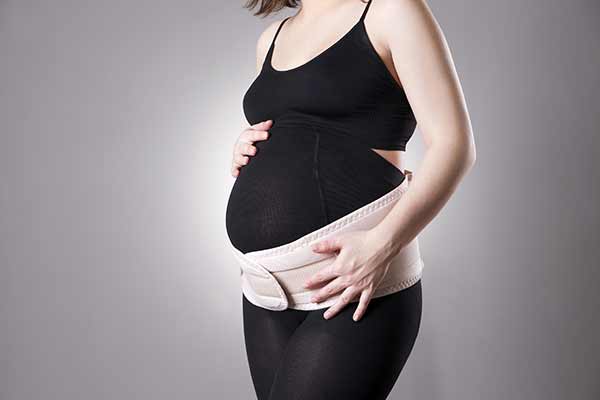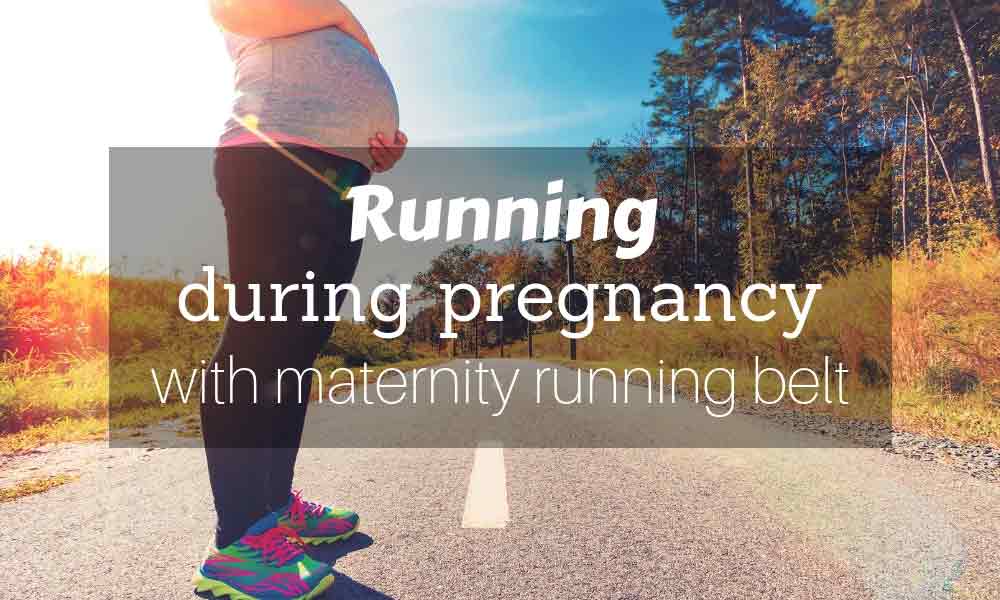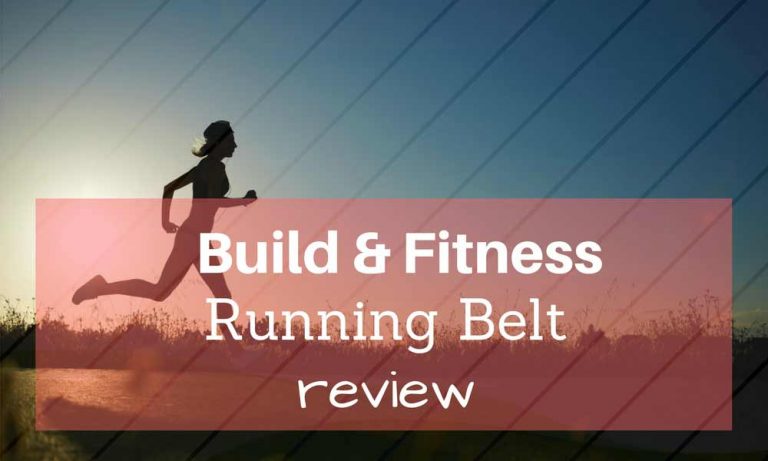Running During Pregnancy With Maternity Running Belt
Running while pregnant is not an easy task. You might end up with back problems later on. But running with a maternity belt will make you feel more confident because it provides the support and comfort you need.
A maternity belt helps distribute the load evenly across the hips and pelvis. It also provides support to the lower back and prevents injury.
Gabriella MS-96 Maternity Support Belt
Gabrialla MS-96 has won many awards. It has been featured in many maternity and baby magazines in the USA. It is FDA & Medicare approved.
It helps to ease pressure on your back and pelvis. It offloads the weight supporting walking, running, and exercising.
The best maternity belts provide excellent comfort while being lightweight and breathable.
This article will share our top picks for the best maternity belt for running.
A maternity running belt acts like a belly band. It provides support for the growing belly, especially while running.
Wearing a maternity running belt might feel awkward at first. Try to wear it in a way that is comfortable for you. Run again and see.
Best Maternity Belts for Running
Gabriella MS-96 Maternity Support Belt – Great Support for Walking & Running
No products found.If you’re pregnant and looking for a maternity belt that supports running, walking, and lifting, No products found. is a great choice.
These belts support your lower back while you run or walk. It is lightweight and breathable, but you can still get hot or sweaty when running or working out with this belt.
They’re also adjustable, so you can find the exact fit that works best for you.
Whether you’re working out or just taking a stroll around the neighborhood, Gabriella helps you throughout your pregnancy.
No products found. is an excellent example of a maternity belt you can use for running.
Maternity FitSplint Belt – Stay Active During Pregnancy
No products found.Running during pregnancy can be challenging, especially if you don’t have any maternity support belt. If you’re looking for something comfortable and supportive, the No products found. might be exactly what you’re looking for.
This fully adjustable maternity support belt helps to provide stability and support for your body during pregnancy.
You can wear it in three ways:
- use straps to lift the belly (helps reduce bladder pressure),
- wear it low on the hips (more pelvic support), or
- separate the two straps (more stability for the belly during motion).
Whatever style suits you best, you’ll be able to support your lower body comfortably throughout your pregnancy.
No products found. may be the one for you if you’re looking for a comfortable and supportive maternity support belt.
Sizing of Maternity FitSplint
The FitSplint comes in three sizes. Select the size by your pre-pregnancy waist size. You can adjust the belt 12″-15″ longer during pregnancy.
If you are in-between sizes, choose the larger size, it will still adjust smaller as needed.
Size (pre-pregnancy):
- No products found. 24″-29″
- No products found. 30″-36″
- No products found. 37″-43″
Upsie Belly Pregnancy Support Band – Breathable & Comfortable
No products found.If you’re pregnant and looking for support, you might find yourself reaching for something comfortable and supportive.
No products found. from Belly Bandit relieves common pregnancy-related problems.
It provides belly support and breathability to reduce discomfort when running.
In addition to providing support, this maternity support band is ultra-comfortable thanks to its soft, breathable bamboo fabric.
It adjusts to fit your changing shape throughout your pregnancy, making it ideal for supporting your exercise at any stage of your journey.
Whether you’re experiencing back pain or simply want to relieve any discomfort caused by pregnancy, No products found. is a great option.
Maternity Support Belts Vs. Belly Braces
Basically, maternity belts and belly bands are the same, but there is a difference.
A belly band is a circle of stretchy fabric used to help you wear your regular pants so that you don’t need maternity clothes. A belly band offers some support, although it’s more about coverage.
Maternity Belt is less about coverage and more about helping to support your bump. It often sits underneath your baby bump. As they are more heavily designed and more adjustable, they help with lower back pain.
Some brands may be a hybrid of both, and some companies use these terms vice versa.

Benefits Of Maternity Belts
Maternity belts can help in numerous situations during pregnancy if you:
- gained more weight
- need to be lots on your feet
- having back pain or pelvic pain
- expecting twins
It helps with your posture as it redistributes that extra weight. It gives you gentle compression and more comfort and assists in pain reduction.
During motherhood, your clothes no longer fit you either, but a maternity brace can help with that, too. The suitable belly bands will give you support, coverage, and a slightly smoother shape for your clothing to fit that little bit better.
A belly band or brace also helps during daily activities. Many enjoy the feeling of snugness, plus a little extra coverage.
The right belt helps you get on with your days without pain. In the first trimester, it acts as slight support under clothes. As you go to the third trimester, it helps with your growing shape as you try to keep moving.
The maternity belts and bands are recommended for those moms-to-be scanning for comfort and extra support.
How to spot poor-quality maternity running belts? It will make you feel like your uterus stays on top of your bladder during a run. You will also feel the urge to pee every few minutes. Maternity running belts of poor quality make it uncomfortable for you and your baby.
How to spot a good quality maternity running belt? A good quality maternity running belt makes you feel like you are running as your usual self. It doesn’t give you the feeling or urge to pee. And most importantly, it provides sufficient support to your baby.
Regular Running Belts
When purchasing a regular running belt, buy a plus-sized running belt with an extender strap. Otherwise running belt tends to get too small as your belly grows.
Also, choose a running belt that is comfortable and dries quickly. Ask fellow expecting moms for suggestions or reviews.
Examples of traditional running belts:
- Ushake running belt fits the 27″-45″ waists, and it comes with an extender that gives an extra 11.8″.
- The Sport2People running belt adjusts waist sizes from 27.5″ to 40.5″.
Facts About Running While Pregnant
1. Running During Pregnancy With a Maternity Running Belt
Running or working out during pregnancy is safe if you have a healthy, uncomplicated pregnancy.
But it is always necessary to have regular visits to your doctor. If you have your doctor’s approval, ensure you don’t push yourself beyond your limits.
If you have been running before you got pregnant, you can continue your regular pace. If you have just begun running, start slowly. Warm up, stretch, and walk, then gradually jog.
However, some women have delicate pregnancies. Running or working out is not recommended for them. Check with your doctor about your condition and if you can do light exercise while pregnant.
2. Benefits of Running During Pregnancy
Running during pregnancy yields health benefits. It provides a workout for your heart and body and boosts your mental and physical fitness. Exercise such as running and walking is easy to do and can fit into your day.
A support band doesn’t completely keep you from feeling discomfort. Pregnancy and running might be an uneasy effort, no matter what you do.
However, the support brace allows you to run farther and longer in your pregnancy. That surely helps to get back to running following childbirth.

Running Tips for Expecting Women
If you decide to keep on running even when pregnant, make sure that you read these tips. Ensure that you’re safe and don’t push yourself beyond safe limits.
Running during pregnancy with a maternity running belt is an excellent idea.
1. Drink Enough Fluid
Do it before, during, and after the run. You can check your hydration by weighing yourself before and after the run. If you lose weight, that means that you lose fluid.
Another way to monitor your hydration is to check the color of your urine. Dark yellow means you lack fluid, while pale yellow to clear means you are hydrated.
2. Wear the Right Kind of Shoes
Wear shoes that provide enough cushioning to absorb shock and provide enough flexibility on the balls of your feet. Look for shoes that support the ankles and arches of your feet.
3. Wear Light Clothes
Pregnant women feel warmer. Make sure to wear light, breathable clothes during the run.
Avoid wearing tight-fitting clothes or apparel made with thick fabrics to keep cool.
4. Be Aware of Changes in Your Body
During pregnancy, you will feel that your body becomes heavier. As your belly grows, the center of your gravity alters. This will make you more prone to falls and slips.
Avoid off-road rocky trails full of tree roots, debris, and other obstacles when running.

5. Don’t Push Yourself Too Hard
Pushing yourself too hard causes breathlessness and might limit your baby’s oxygen supply.
Signs that you are pushing yourself beyond limits are the following:
- Pain in ligaments and joints.
- Feeling exhausted instead of energized after the run.
- Sore or weak muscles.
- Abnormal resting heartbeat.
When to Start Wearing the Maternity Support Belt
There is no exact date. It is a matter of personal preference.
If you run, you can use it when you are beginning to feel the extra weight in your front, so it is more of a comfort thing.
Even if you aren’t noticeably bigger to most people, it helps support the pregnancy weight gain in the belly area.
Exercises like running can easily irritate the areas supporting the baby’s weight, like hip flexors and back. A maternity support belt really helps with this irritation.
You should consult a doctor regarding the recommended use if you have any special conditions.
How to Wear the Maternity Belt
Belts and braces usually have Velcro straps and adjust on both sides.
You can fine-tune the side straps as your belly grows to make it more comfortable. You can tighten it so that it still is comfortable.
You can fasten it right below where your belly starts to go out. Some prefer it a little higher up, some lower. Some like it over their shirt, and some like it under.
Other Usage Besides Running
The belly band is handy if you are going for a walk, standing or moving around all day, and even at work. You can wear it towards the end of pregnancy if you feel uncomfortable.
Equip yourself with the correct information and the right apparel when you run during pregnancy.
Have an active and safe pregnancy!
More Reading About the Exercising While Pregnant
There are many myths about exercising while pregnant.
The book “No products found.” by James F. Clapp, III, MD, and Catherine Cram, MS, proves it’s ok and beneficial to exercise while pregnant.
No products found.This is not a book about workout plans; it’s more about specific, factual information regarding exercise during pregnancy.
It answers crucial questions such as, “How does training benefit the mother?”, “What is the right amount of activity?”, “What are the dos and don’ts of practicing when pregnant?” and “How late into pregnancy can you train?”.
The Bottom Line
So if you’re planning to run during pregnancy, a maternity running belt is a perfect accessory to help keep you safe and supported throughout your journey.
And since they come in many styles, you won’t have trouble finding one that suits you. These belts are comfortable, affordable, and easy to use. So pick one up today!




